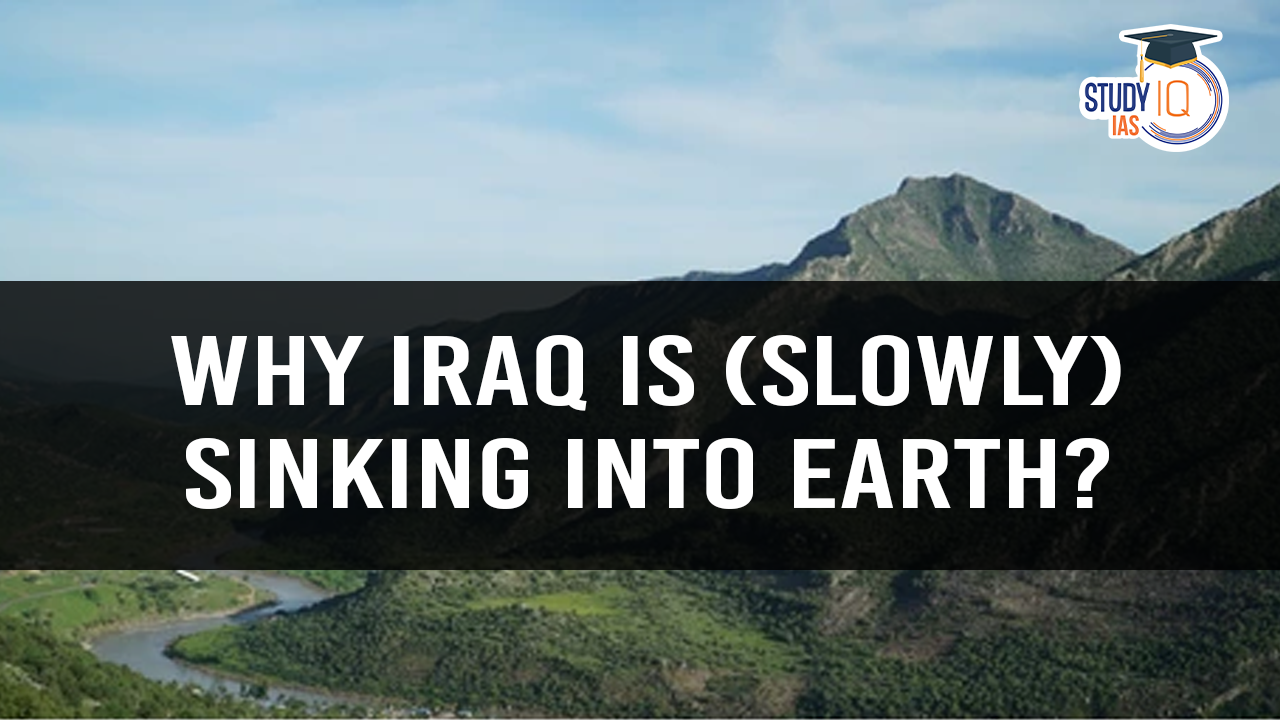Table of Contents
Context: A recent geological study has found that the northern region of Iraq is slowly sinking.
Plate Tectonics and the Sinking Oceanic Slab
- The sinking is caused by the Neotethys oceanic slab, a remnant of an ancient ocean floor that existed over 66 million years ago.
- This slab is located in a region between the Arabian and Eurasian continental plates and is now splitting apart from southeast Turkey to northwest Iran.
- Neotethys slab is actively sinking and is dragging the Zagros region of Iraq downward.
- Zagros Mountain range was formed due to tectonic collisions between the Arabian and Eurasian plates.
- The sinking is occurring extremely slowly—over millions of years—and is not visible in human timescales.
Check here: Plate Tectonics Theory
| Zagros Mountain |
|
Causes of Land Subsidence in Northern Iraq
Plate Tectonics and Geological Shifts
- Iraq sits at the convergence of the Arabian and Eurasian tectonic plates.
- The collision between these plates leads to seismic activity, faulting, and gradual land movement.
- These geological shifts are contributing to uneven ground sinking in some areas.
Groundwater Depletion
- Excessive extraction of groundwater for agriculture and urban needs is accelerating land subsidence.
- As underground water reservoirs empty, the soil loses structural integrity, causing the land to sink.
Climate Change and Desertification
- Rising temperatures and reduced rainfall have intensified drought conditions.
- The drying up of rivers and lakes leads to soil compaction and further land sinking.
Urbanization and Infrastructure Development
- Unregulated construction and expansion of cities put additional pressure on fragile land structures.
- The weight of heavy buildings and infrastructure can contribute to ground instability.
Impacts of Land Subsidence
- Damage to Infrastructure: Roads, bridges, and buildings in affected areas may crack or collapse.
- Increased Seismic Vulnerability: The sinking land could amplify earthquake risks in an already seismically active region.
- Water Crisis: Shrinking groundwater levels make water scarcity worse, impacting agriculture and daily life.
- Displacement of Communities: People living in sinking areas may be forced to relocate, leading to social and economic disruptions.


 Places in News for UPSC 2026 for Prelims...
Places in News for UPSC 2026 for Prelims...
 Lake Natron: Location, Features, Wildlif...
Lake Natron: Location, Features, Wildlif...
 Erra Matti Dibbalu Added to UNESCO Tenta...
Erra Matti Dibbalu Added to UNESCO Tenta...




















